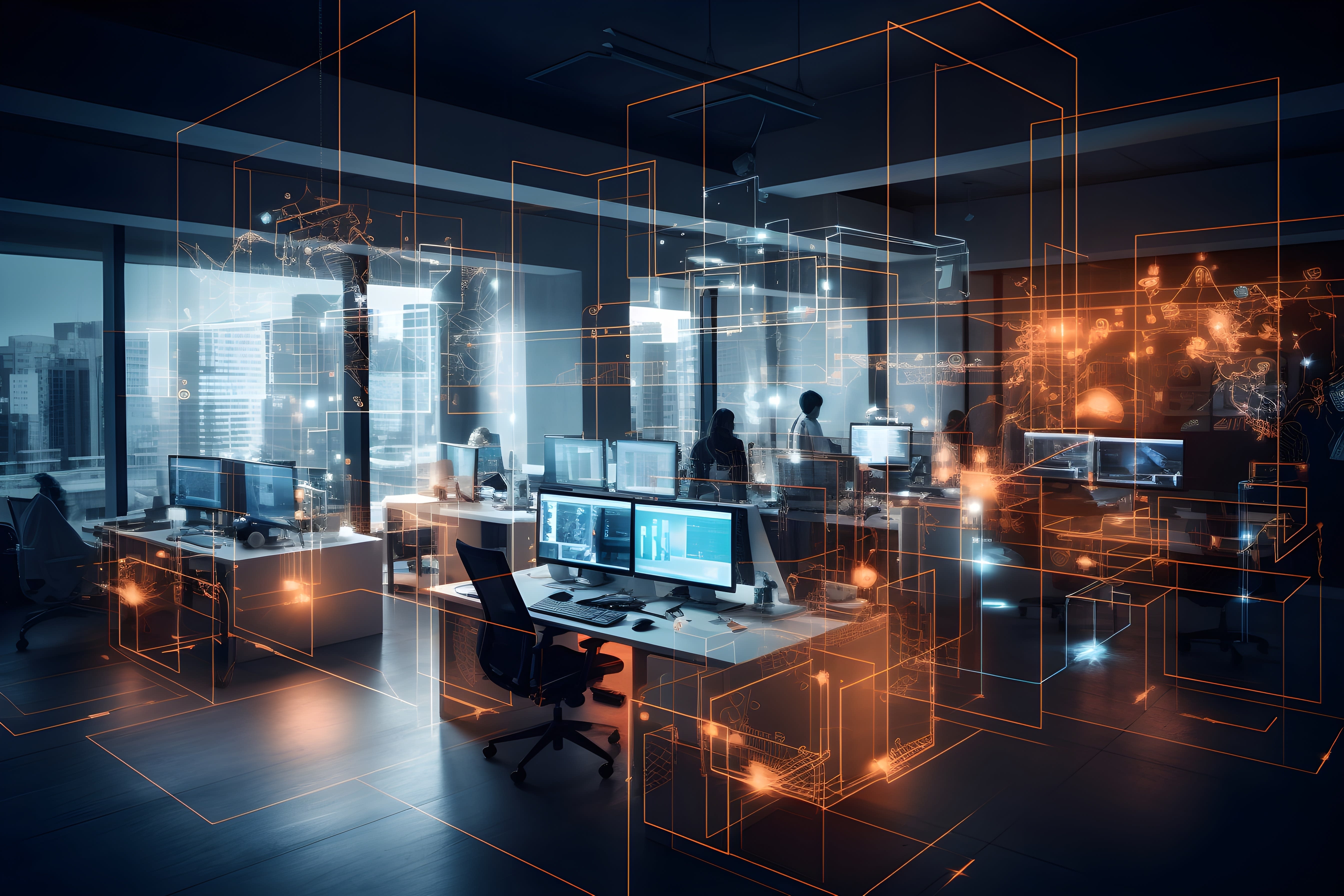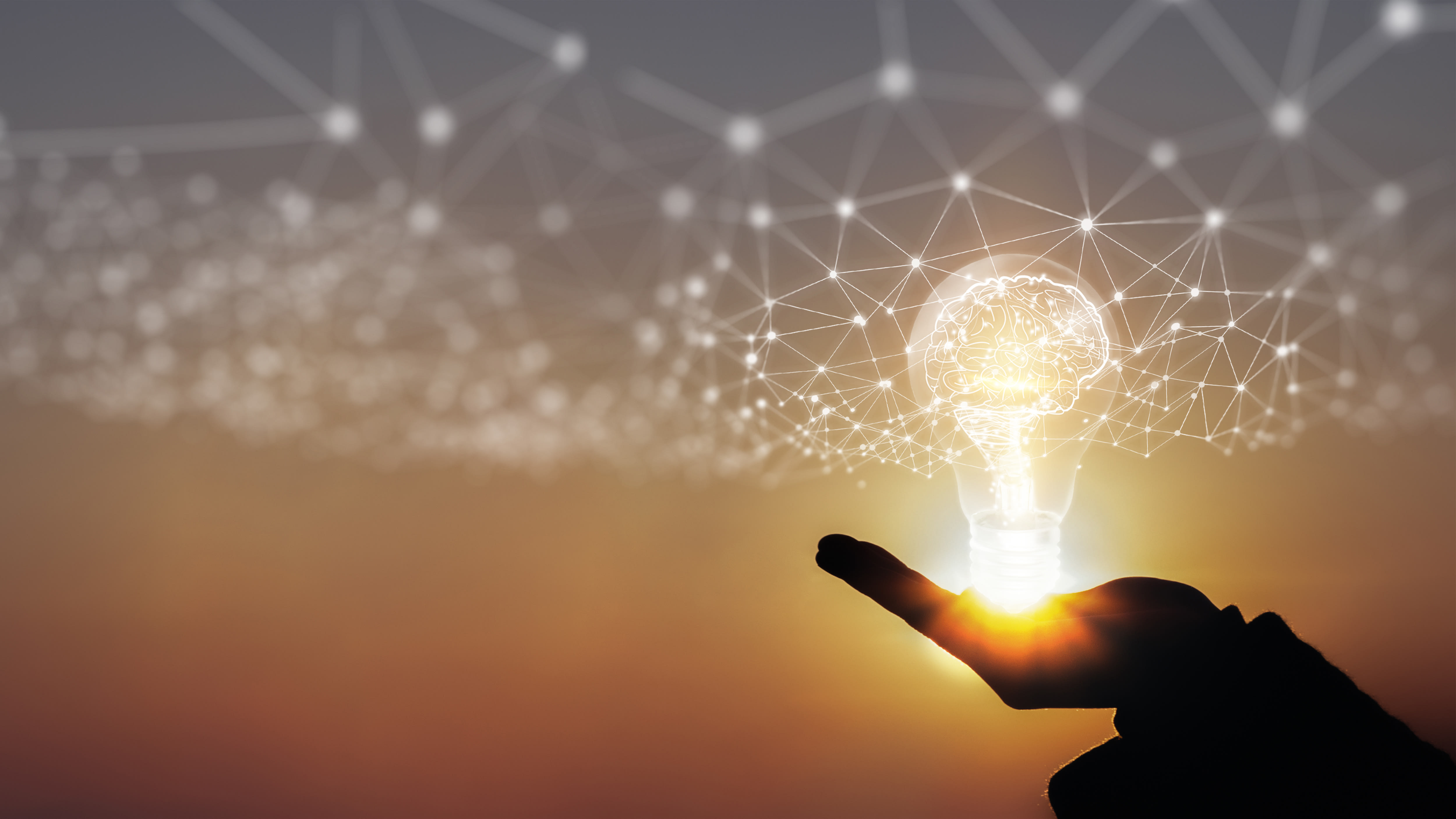Unpacking AI: boost creativity and productivity in the AEC industry
Set yourself apart from the competition by understanding and adopting AI that sparks creative innovation and speeds up your production timeline.

The Architecture, Engineering, and Construction (AEC) industry stands on the cusp of a technological revolution primarily fueled by Artificial Intelligence (AI). As we look at AI's benefits for industry professionals, we see two significant ways AI will influence outcomes: AI as a catalyst for creativity and an engine for productivity.
Professionals who learn to use AI technology for either of these outcomes will have an advantage over those who do not adopt it, and we expect those savvy professionals to jump ahead of the competition. They will be able to deliver more unconventional thinking and robust projects faster. Let’s look at a few ways people are thinking about AI and how to stay ahead of the technology curve.
The landscape: a fear of AI takeover
In fields like design and architecture, creativity is the linchpin that sets one professional or firm apart from the next. Many people fear that AI technology will one day replace human creativity. A popular meme on the internet sums up this collective fear:
“You know what the biggest problem with pushing all-things-AI is? Wrong direction. I want AI to do my laundry and dishes so that I can do art and writing, not for AI to do my art and writing so that I can do my laundry and dishes.”
Joanna Maciejewska, Author
Unfortunately, laundry and dishes are still off the table. However, anyone who’s used Chat GPT can tell you that they get heaps of information, but it still takes a human mind to sort through that data and craft something truly unique — for now.
The fear that AI will take over certain jobs is not unfounded. History shows that technological advancements often disrupt existing labor markets, but they also offer opportunities for those who can harness the technology.

The flip side: AI as inspiration
AI also has the potential to create jobs and foster new skill sets. AI can liberate humans from monotonous tasks, allowing them to focus on aspects of work that require creativity, emotional intelligence, and strategic thinking—qualities that AI cannot replicate. For architects and engineers, this means more time for innovation in design, client relations, and complex problem-solving.
And AEC firms are catching on to the AI trend. A RIBA AI Report 2024 states that AI adoption in practice is 41%, suggesting that organizations use AI for at least the occasional project.
Companies that provide technology to the AEC industry, like Trimble SketchUp, are hard at work creating opportunities for their customers in the rapidly changing technology landscape.
“We believe AI can help our customers achieve accurate results more often, boosting their productivity and enriching their creativity. These benefits give our customers more time to focus on what they truly desire, whether that's creating innovative designs or winning more work to grow a thriving business.”
Chris Cronin, Vice President, Trimble Architecture & Design and Education
Unleashing Creativity with AI
By leveraging AI, professionals can explore new possibilities, streamline the creative process, and bring innovative ideas to life efficiently and precisely. Let's explore how AI supports creativity with examples from two creative companies, SketchUp and Adobe.
Diffusion lets you harness AI within SketchUp to create rendered images in seconds.
Image creation from 3D models with AI
Diffusion [LABS] lets you harness the transformational power of AI within SketchUp to create rendered images in seconds. Diffusion brings easy-to-use generative AI into SketchUp, offering a novel way to quickly generate images that inspire your creative process and support your design narrative. While Diffusion doesn’t have a creative vision of its own, it can help you focus yours.
Intelligent Editing in Photoshop
Adobe Sensei facilitates complex photo editing tasks, such as selecting and masking subjects, refining hair details, and replacing skies, by automating these processes with a single click. This allows artists and designers to focus more on creativity rather than tedious tasks.
Amplifying Productivity with AI
Deadlines, budgets, and resource constraints constantly challenge the AEC industry. Here, AI emerges as a game-changer, enhancing productivity across project lifecycles. From predictive analytics for project management to automated quality checks, AI-driven processes streamline operations, reduce errors, and save time.
“Around 40% of tasks in design development can be automated using AI.”
Here are a few ways AI can enhance productivity:
Automation of repetitive tasks
AI can automate routine and repetitive tasks, allowing employees to focus on more complex and value-added activities. For example, AI-driven data processing and analysis can significantly reduce the time spent on manual data handling.
Improved decision making
AI systems can analyze vast amounts of data quickly and accurately, providing insights that help make informed decisions. Some technology companies have automated essential data analysis tasks like zoning studies, cost estimating, energy benchmarking and climate analysis. This can lead to better project planning, resource allocation, and overall management efficiency.
Enhanced accuracy
AI reduces the likelihood of human error in data entry, analysis, and other processes, ensuring higher accuracy and reliability of information, which is crucial in fields like construction, agriculture, and geospatial sciences.
Predictive maintenance
AI can predict equipment failures and maintenance needs, reducing downtime and extending the life of machinery. This proactive maintenance approach ensures that equipment is available and functioning when needed.
Optimized resource utilization
AI helps optimize resources such as materials, labor, and time. For instance, AI-driven project management tools can schedule tasks efficiently, ensuring that resources are used optimally.
Data-driven insights
AI can analyze trends and patterns in data to provide actionable insights, helping businesses adapt strategies and operations in real time based on current data.
Scan-to-Design lets you scan, design, and collaborate all in one app.
In SketchUp, AI enhances productivity through features like automated 3D model organization and increased search functionality. This can be seen in SketchUp’s Scan-to-Design [Labs], which lets you scan, design, and collaborate—all in one app. Architects and designers can scan existing interior spaces, and SketchUp converts the scan data into intelligently organized 3D geometry. Specifically, it recognizes and tags objects like walls, windows, furniture and more.
AI also lives in SketchUp’s popular model library, 3D Warehouse. The AI-enhanced image search helps people quickly find the perfect model from millions of pre-built options, helping to speed up design workflows.
Check out improvements coming to SketchUp’s AI model finder in Labs.
If you’re interested in all the AI features in SketchUp and the ethics of using AI in this software, check out this page.
How one product visualizer uses AI-enhanced image search for instant scene building.
Try AI that’s powerful, productive, and delightful to use with a free SketchUp trial.
Set yourself apart from the competition
Understanding and adopting AI can be challenging. It takes time to learn the technology and sort through overhyped features to find those that truly offer rich and practical solutions to improve your products.
However, those who skillfully embrace AI technology can significantly enhance their efficiency, improve accuracy, and find new creative avenues. By adopting AI, professionals can boost their contribution to their organization's growth and client retention.